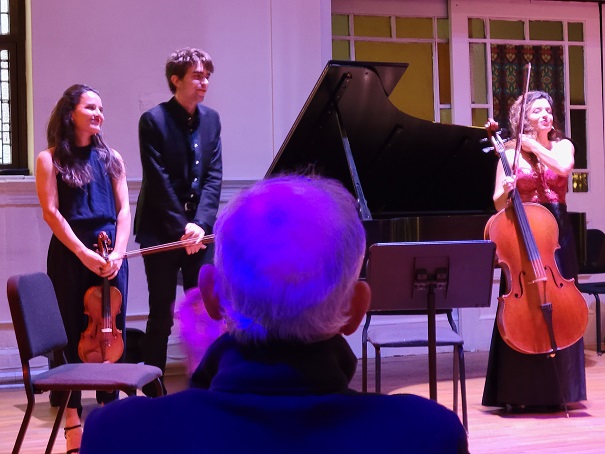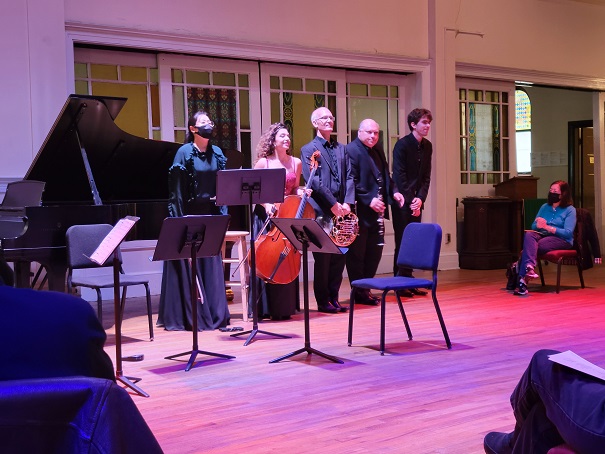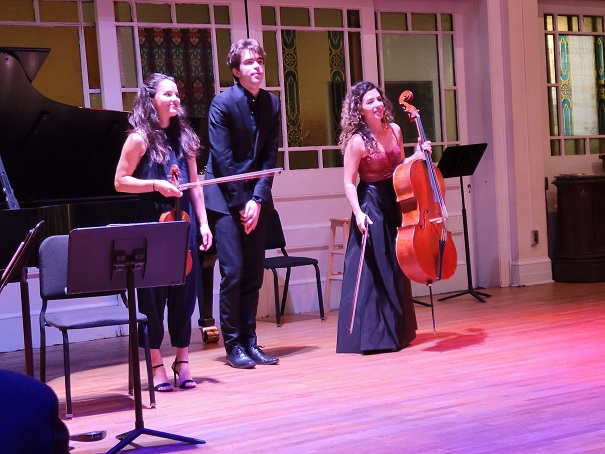Concert Diary: “Expats in France” with the Jupiter Players
October 18, 2021
New York, N.Y.
Some chamber music ensembles play the familiar standard repertoire, and then there is the Jupiter Symphony Chamber Players. The Jupiter’s programs are assembled with cleverness (and I suspect some deviousness) by artistic director Michael Volpert to lean towards the unfamiliar and obscure. It’s often unnerving for an average listener like myself to see a program featuring composers that I’ve never even heard of, but I’m enjoying the challenge. This is music that I might never again hear performed live, so listening with great focus becomes essential.
Today’s concert featured four composers who were born in Austria, Poland, Germany, and Norway, but who spent significant time in Paris.
Ignaz Pleyel (1793 – 1831) is much better known as a piano builder than a composer. The pianos built by the company that he founded were highly regarded into the 20th century. As a composer, he’s remembered mostly as a student of Haydn rather than for his own music. We heard his Piano Trio in D Major from 1793, which began with a movement full of Haydnesque joy and keeping the pianist quite busy. The minor key Adagio featured a long-drawn wistful theme, which returned to the end, and the delightful third movement rondo had a first theme that sounded to me like a peasant dance.
Here are violinist Abigel Kralik, pianist Albert Cano Smit, and cellist Ani Aznavoorian during curtain calls:
The violinist and cellist then played music of perhaps the most famous 19th century expat composer in Paris, Frédéric Chopin (1810 ). What? Are you not familiar with Chopin’s violin and cello music? Me neither! These were actually three of Chopin’s many mazurkas for piano arranged for violin and cello by Hungarian pianist and composer Zoltán Kocsis (1952 – 2016). As violinist Abigel Kralik explained in the program notes, “Playing these dances comes with the unique challenge of trying to imitate the precision and ease of the pianist’s fingers without losing the expressive and singing qualities of the violin and cello,” but the result also gave to the string instruments a decidely percussive tone.
Even if you didn’t know anything about Friedrich Kalkbrenner (1785 –1849), you might guess that he was a piano virtuoso, because even though his 1826 Grand Quintetto in A Minor (Op. 81) includes a clarinet, horn, cello, and double bass, it’s really the piano that hogs the stage. From the dramatic opening of the long first movement to its quiet close, the piano showed off with great exuberance, while the other instruments mostly played together in rather meek contrast. The middle movement Andante Quasi Adagio fortunately gave some solo moments to the clarinet, horn, and cello, and the last movement featured some particularly quirky tunes.
From left to right, double bassist Ha Young Jung, cellist Ani Aznavoorian, horn player Karl Kramer, clarinetist Vadim Lando, pianist Albert Cano Smit, and an appreciative member of the audience:
The real revelation was Norwegian composer Thomas Dyke Acland Tellefsen (1823 – 1874), who was a pupil of both Kalkbrenner and Chopin. His 1861 Piano Trio (Op. 31), began gently, then gradually got more intricate and dense. Very Brahmsian! The second movement Scherzo had a playful lightness despite its speedy tempo, while the third movement Adagio was to die for: unabashedly lovely melodies tossed among the instruments in varieties of accompaniment. The finale was perhaps deliberately easygoing so as not to break the spell of the Adagio, but nevertheless built to a satisfying conclusion.
And now I’ll be on the lookout for those undoubtedly rare occasions when Tellefsen’s music might once again show up on a concert program.


